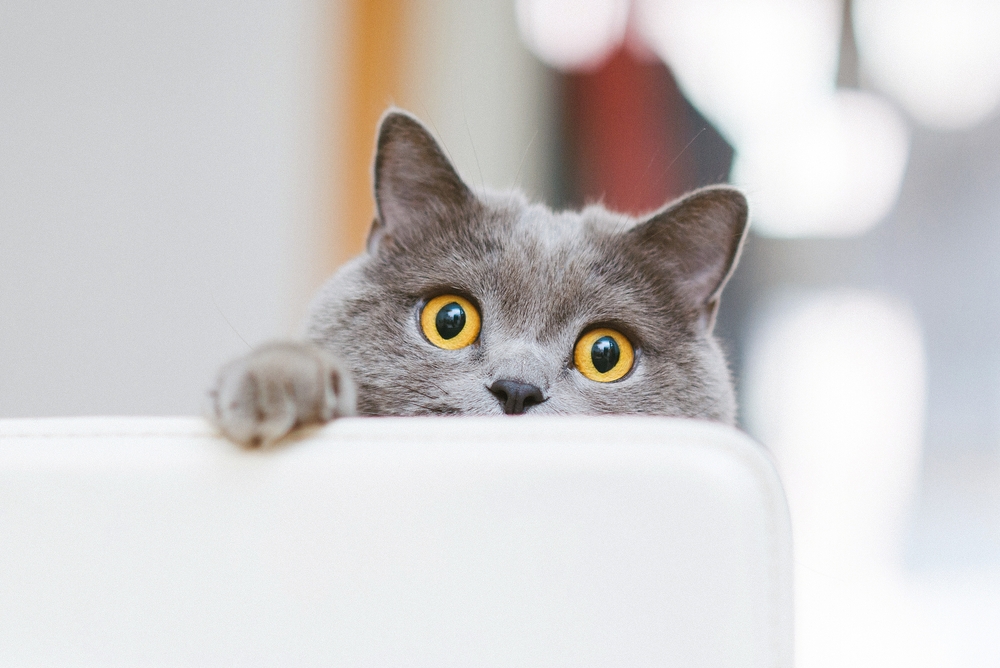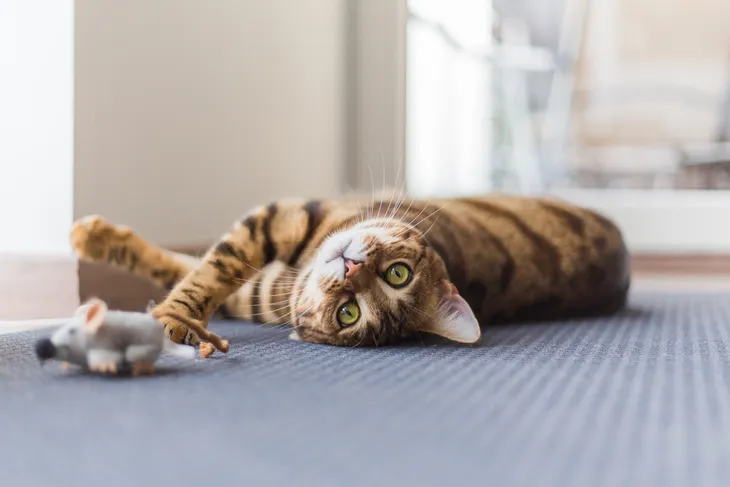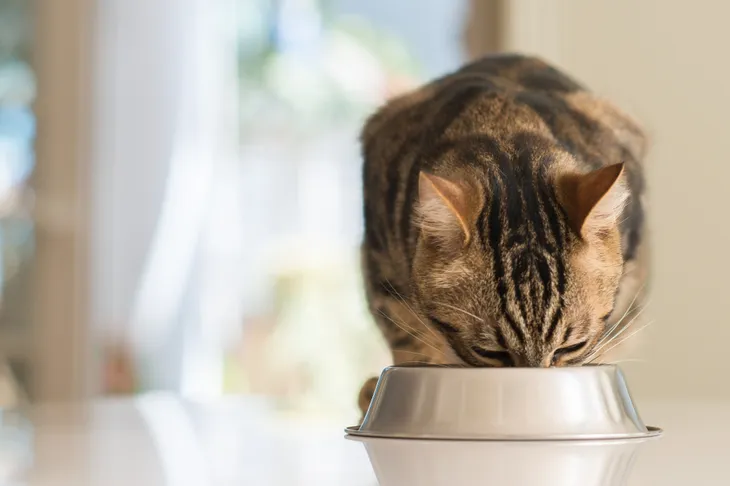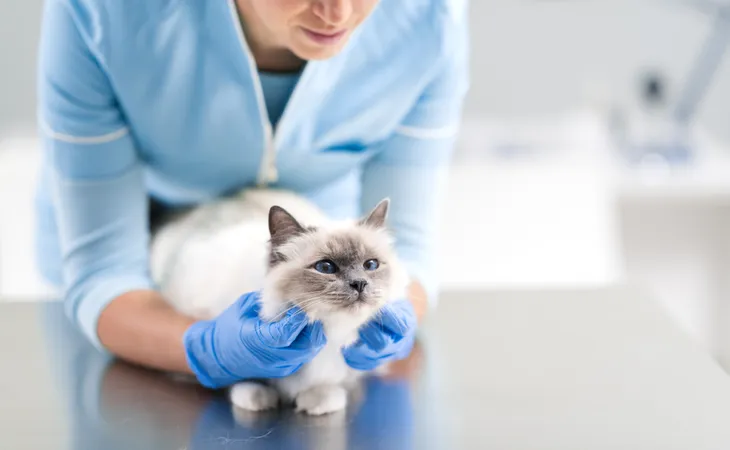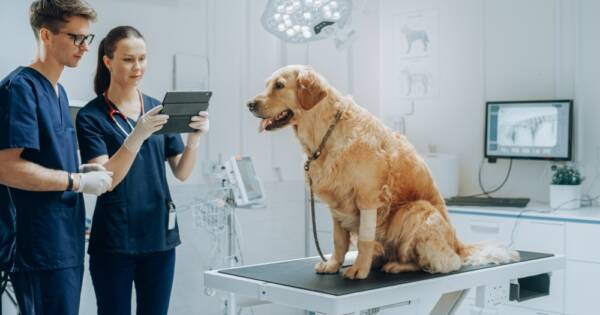- Cats know how to hide their pain really well but as owners, it’s our job to keep a watchful eye on our kitty’s health.
- There are subtle hints you can look for that may indicate your cat is in pain such as changes in behavior, energy levels, sleep, and appetite.
- If your cat is showing signs of pain or you have an inkling that something is wrong, bring your cat to the vet.
No one wants their fur babies to be in distress but diagnosing pain in cats can be incredibly difficult. This is because they have a natural instinct to hide their pain. And it makes sense too. Cats have developed this natural instinct to help protect them in the wild, after all, you can’t let a potential predator know that you may be injured, right?
While cats do mask their pain, there are subtle hints you can look out for that may indicate your cat is suffering. Follow along as we uncover 11 ways to know your cat is in pain. Always remember, if your cat is showing signs of pain, it’s time to take them to your veterinarian.
Behavioral Changes
It’s easy to miss behavioral changes, especially if they’re subtle, but pay close attention because any change in your cat’s behavior could be an early sign that they’re in pain. For example, if your cat suddenly starts hiding, this could be a sign that something is wrong.
Cats often like to engage with their owners whether it’s playing, cuddling, or just following them around the home. But if your cat suddenly stops doing these things, this may be another sign of pain.
Unusual Aggression
You should also be on the lookout for unusual aggression. The Metropolitan Veterinary Center says, “Cats who are in pain often exhibit uncharacteristic aggression, too.” This is possible in even the friendliest cats.
Watch out for signs of aggression such as scratching or biting when being touched or moved. Unusual hissing and growling when someone comes near is another sign of aggression. The source says unexplained aggression is a serious behavioral change that warrants a vet visit.
Activity or Energy Changes
Cat’s energy levels naturally decrease as they get older, however, a sudden change in activity or energy levels can also be a key sign that your cat is in pain. Does your cat normally like to chase toys? If they suddenly stop showing interest in playtime or perhaps have a decrease in endurance, then this may be a sign.
Also, pay attention to how your cat moves. Are they hesitant to run, jump, or stand? Are they restless and repeatedly get up and lie down, trying to find a comfortable position? These could all be key indicators that your cat may be in pain.
Not Using Their Litter Box
Cats are smart creatures. They can learn to use their litter box at a very young age and unlike dogs, potty training is something they pick up almost instantly. But when they start eliminating outside the litter box, this can be a cause for concern.
Cats may stop using their litter box for a variety of reasons from being upset with the placement of the box, the litter itself, or changes to their environment. In some cases, they’re just doing it to act out, however, it can also be a sign that something is wrong with their health.
For example, The Metropolitan Veterinary Center says when cats experience pain in their knees, hips, spine, or elbows, entering and leaving the litter box can be painful. If they’re experiencing pain during urination they may associate the pain with the litter box and therefore stop using it. Whatever the reason, if your cat stops using the litter box this is a key indication that something is wrong.
Grooming Changes
Grooming is another natural habit cats learn, usually from their mothers. Not only does it keep them looking good, but it helps keep them healthy too.
Grooming helps keep their skin and fur healthy by stimulating the production of sebum and it also helps them stay cool. Unlike dogs, cats don’t pant to cool off, they “rely on the evaporation of saliva spread on the fur through grooming to keep cool,” explains The Spruce Pets.
First, if your cat is panting, this is not normal and is a serious cause for concern, and should be examined by your vet right away. Secondly, if your cat suddenly stops grooming (or starts overgrooming, particularly one part of their body), this could also be a sign that they’re in pain or something is wrong with their health.
Facial Expressions
Your cat’s facial expression can also be a good indicator that they’re in pain. The VCA Animal Hospitals says cats who are in pain may grimace when they’re in pain. A vacant stare off into space, or a wide-eyed look may also be a sign that your cat is in pain, says the source.
Other unordinary facial expressions to look out for are squinting their eyes, flattening their ears, or tense cheeks, nose, or mouth. Essentially be mindful of any unusual facial expression and contact your vet if you think it may be a cause for concern.
Change in Posture
Cats are flexible animals and can put themselves in funny positions to fit through small crevices. However, if you notice a sudden change in posture or a change in their gait, this may be a sign that something is wrong.
According to the VCA Animal Hospitals, cats who are in pain may stand with their front legs back under their chest to help take some of the weight off of painful hips or rear legs. They may also keep their legs tucked instead of stretched when sleeping, have difficulty stretching, tuck their tail between their legs, or move less gracefully when they’re in pain.
Changes in Sleep
It’s normal for cats to sleep a lot, up to 18-hours per day! As they get older they sleep even more. But you’ll want to pay attention when your cat’s sleep habits change.
Many factors can influence their sleeping habits such as a change in environment, or if they recently had a lot of activity. That said, signs that your cat might be in pain may include having difficulty getting into a comfortable sleeping position, sleeping in strange locations, decreased (or increased) sleep, or seeking out warmer places to sleep. The Metropolitan Veterinary Center also notes that cats rarely sleep on the floor so if they suddenly start sleeping in lower places this may be a red flag too.
Decreased Appetite
Like humans, cats can be picky eaters too. While a loss of appetite could merely be a sign that they don’t like the food you’re offering, it can also be a sign of an underlying health problem.
According to The Spruce Pets, if your cat isn’t feeling well or has something stuck in its stomach or intestines, it may stop eating. Cats should eat at least two meals a day to be healthy, so if they stop eating you should contact your vet right away.
Change in Water Intake
Not only can cats lose their appetite when in pain, but they may also decrease their water intake or stop drinking water entirely. This is a serious concern because water is essential for their health. Water supports their circulatory system, digestion, and waste removal and when they don’t drink enough they can become dehydrated.
Monitor your cat’s drinking bowl and contact your vet if they’re drinking less water. It’s also important to be on the lookout for signs of dehydration which include panting, loss of energy, refusals to eat, sunken eyes, and tacky/dry gums.
Vocalizing
Cats meow to deliver messages from a friendly “hello” when you return home, to “feed me dinner,” and even a meow to “clean my litter box.” Most owners can distinguish what each one means, but when your cat’s meow changes this may be a sign that something is wrong.
The VCA Animal Hospitals says when a cat is in pain, it will make noise! An upset stomach, achy arthritic joints, or injuries are all common reasons a cat may become more vocal than usual. The source says to be on the lookout for high-pitched, drawn-out howel-yowls, as well as hissing and growling.
What to Do if You Notice These Signs
Cats know how to hide their pain really well but as owners, it’s our job to keep a watchful eye on our kitty’s health. If you notice any of the signs on this list or anything else out of the ordinary, take your cat to the vet.
While some of these signs won’t always indicate that your cat is unwell, it’s better to have them checked to be sure. Identifying health ailments early will help your cat get the treatment they need and in some cases, early intervention may mean a better prognosis too.
